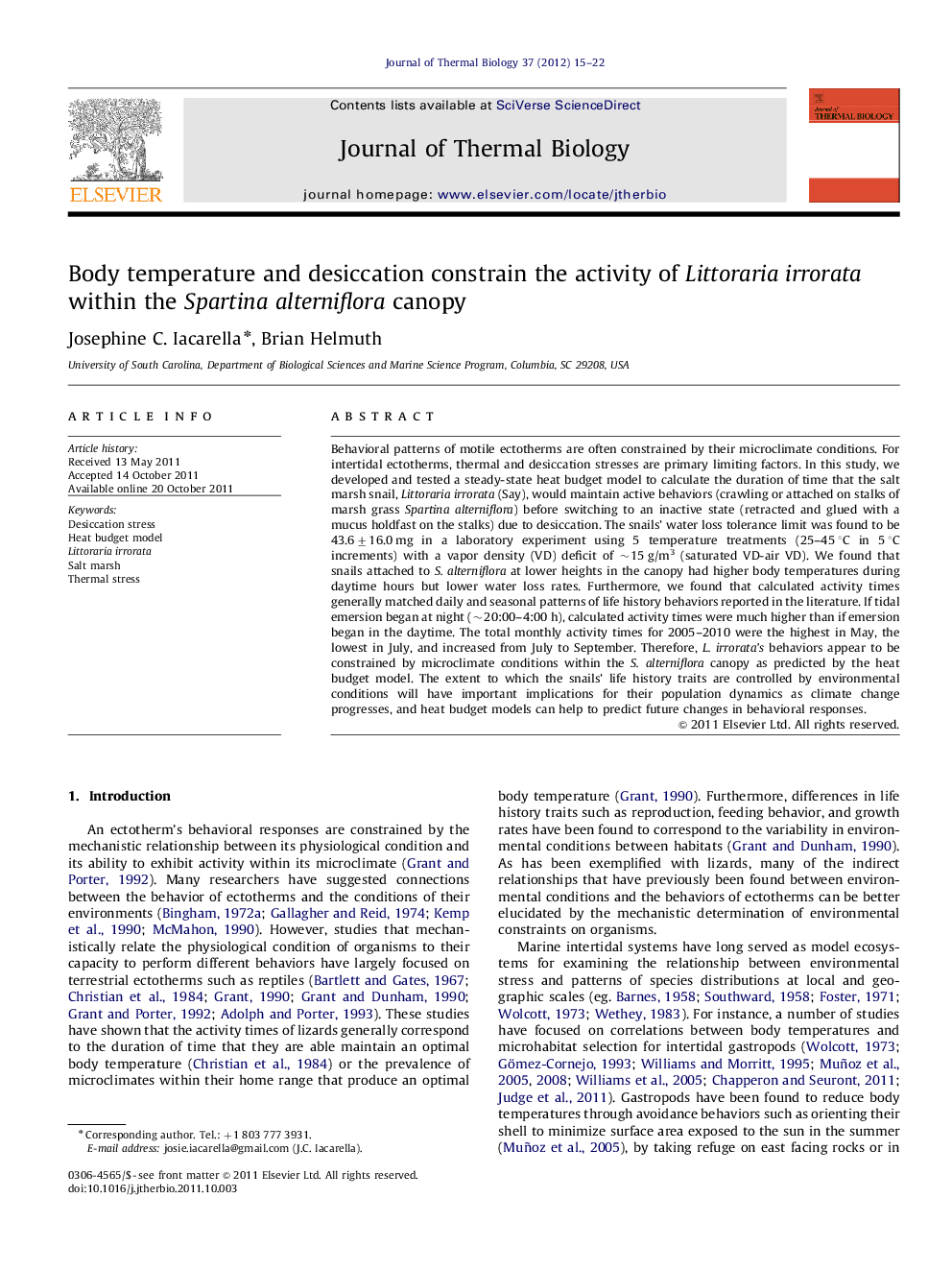| Article ID | Journal | Published Year | Pages | File Type |
|---|---|---|---|---|
| 2843205 | Journal of Thermal Biology | 2012 | 8 Pages |
Behavioral patterns of motile ectotherms are often constrained by their microclimate conditions. For intertidal ectotherms, thermal and desiccation stresses are primary limiting factors. In this study, we developed and tested a steady-state heat budget model to calculate the duration of time that the salt marsh snail, Littoraria irrorata (Say), would maintain active behaviors (crawling or attached on stalks of marsh grass Spartina alterniflora) before switching to an inactive state (retracted and glued with a mucus holdfast on the stalks) due to desiccation. The snails' water loss tolerance limit was found to be 43.6±16.0 mg in a laboratory experiment using 5 temperature treatments (25–45 °C in 5 °C increments) with a vapor density (VD) deficit of ∼15 g/m3 (saturated VD-air VD). We found that snails attached to S. alterniflora at lower heights in the canopy had higher body temperatures during daytime hours but lower water loss rates. Furthermore, we found that calculated activity times generally matched daily and seasonal patterns of life history behaviors reported in the literature. If tidal emersion began at night (∼20:00–4:00 h), calculated activity times were much higher than if emersion began in the daytime. The total monthly activity times for 2005–2010 were the highest in May, the lowest in July, and increased from July to September. Therefore, L. irrorata's behaviors appear to be constrained by microclimate conditions within the S. alterniflora canopy as predicted by the heat budget model. The extent to which the snails' life history traits are controlled by environmental conditions will have important implications for their population dynamics as climate change progresses, and heat budget models can help to predict future changes in behavioral responses.
► A heat budget model accurately predicts salt marsh snail physiology and behavior. ► Snails are hotter but desiccate less at lower heights on grass stalks during midday. ► Snail activity is constrained by desiccation caused by wind. ► Snails are most active during nighttime hours when avoiding desiccation. ► Snail activity times correspond with seasonal trends of energy uptake and output.
